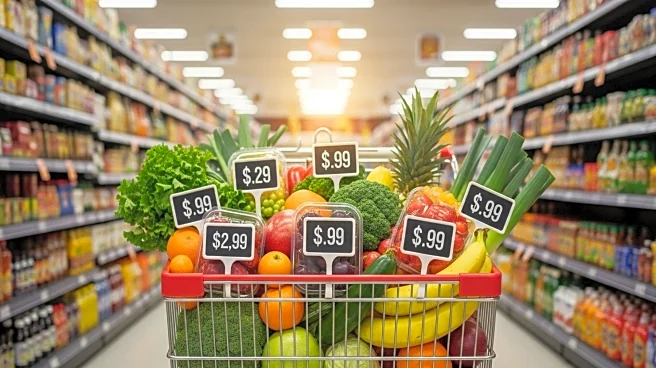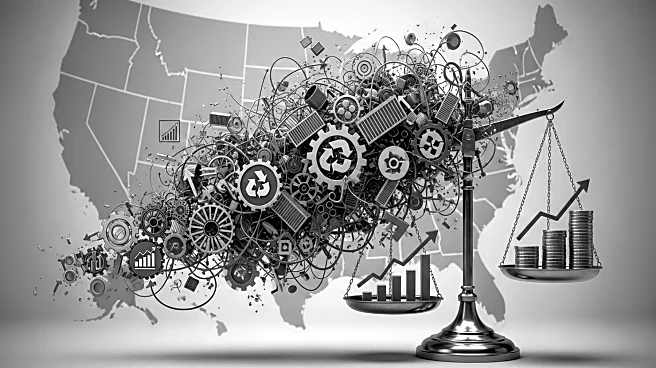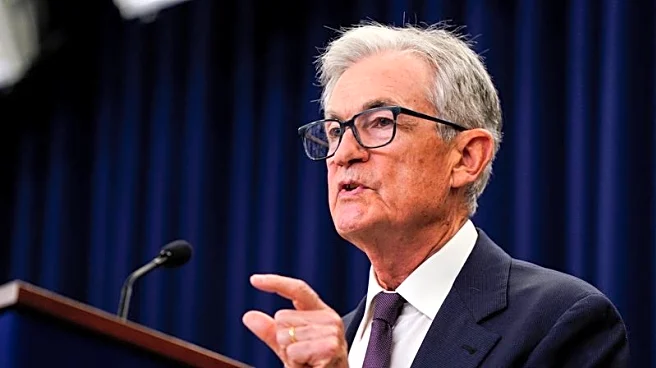What is the story about?
What's Happening?
Grocery prices in the United States have been rising significantly, driven by a combination of factors including tariffs, labor costs, and supply chain disruptions. According to the latest Consumer Price Index from the U.S. Bureau of Labor Statistics, food prices at grocery stores increased by 0.6% from July to August, marking the fastest monthly rate change since October 2022. The overall cost of groceries has surged by 29% since before the COVID-19 pandemic. Key contributors to this rise include the impact of tariffs on imported goods such as beef and coffee, as well as labor shortages exacerbated by stricter immigration policies. Additionally, climate change and past droughts have affected the supply of beef, further driving up prices. The situation has caused significant stress among consumers, with a poll indicating that 53% of U.S. adults consider grocery costs a major source of stress.
Why It's Important?
The rising grocery prices have broad implications for U.S. households, particularly affecting lower-income families who spend a larger portion of their income on food. The increase in food costs can lead to reduced consumer spending in other areas, potentially impacting the broader economy. Businesses in the food supply chain, including farmers and retailers, may also face challenges as they navigate higher operational costs and changing consumer behaviors. The situation underscores the interconnectedness of global supply chains and the impact of international trade policies on domestic markets. As tariffs and labor issues persist, the pressure on grocery prices is likely to continue, affecting both consumers and businesses.
What's Next?
Looking ahead, the continuation of tariffs and labor shortages could lead to further increases in grocery prices. The end of a U.S.-Mexico trade agreement and the imposition of tariffs on tomato imports may result in higher prices for tomatoes and related products later in the year. Consumers may need to adapt by seeking cost-saving measures such as purchasing store brands or looking for deals. Policymakers and industry leaders may need to address these challenges through trade negotiations and labor policy adjustments to mitigate the impact on consumers and the economy.
AI Generated Content
Do you find this article useful?















